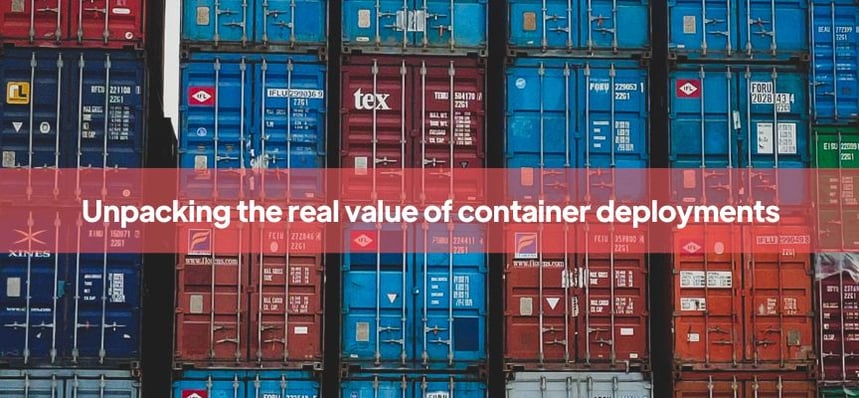The tech race is not just about who can innovate the fastest, but also about who can deliver the most value while keeping costs in check.
As we've discussed before, containerization has emerged as a key player in this race, offering significant benefits in terms of both performance and cost-efficiency. According to a recent Gartner report, by 2025, more than 85% of global organizations will be running containerized applications in production, a significant increase from 35% in 2019.
However, to utterly understand the value of container deployments, it is crucial to measure their Return on Investment (ROI). According to Gartner, this requires a comprehensive cost-benefit analysis that considers not only the direct costs and savings, but also the indirect benefits of increased agility and improved operational efficiency.
One of the primary benefits of containerization, as highlighted by Gartner, is the ability to make more efficient use of resources. This is something we have seen firsthand at Kubeark. By packaging applications and their dependencies into a single, self-contained unit, containers can run on any system that supports the container runtime environment. This eliminates the need for a full operating system for each application, resulting in significant savings in terms of both storage and compute resources.
But the benefits do not stop there. As we've previously explored, containerization also enables auto-scaling, allowing you to automatically adjust the number of running containers based on the load. This means you only use (and pay for) the resources you need. And with the possibility of using spot instances for non-critical workloads, the cost savings can be even greater.
However, calculating the ROI of container deployments is not just about tallying up the savings. It is also important to consider the costs. These can include the costs of container orchestration tools, additional security measures, and potentially higher costs for networking and storage. It is also crucial to factor in the costs of training your team to work with containers.
In addition to these direct costs and savings, Gartner also highlights the importance of considering the indirect benefits of containerization. These can include increased agility, as containers make it easier to update and deploy applications, and improved operational efficiency, as containers can reduce the time and effort required for system administration.
To make the most of these benefits, it's important to align your container deployment strategy with your business needs. As we've discussed in a previous post, this might mean aligning user tiers to optimize costs, or it might mean focusing on improving performance for critical workloads.
Kubeark’s role in cost optimization
- Our auto-scaling features facilitate dynamic resource allocation. During periods of high demand, we can automatically deploy more resources, ensuring that your high-value or heavy usage tiers are sufficiently catered to. During periods of low demand, we scale back, ensuring that resources are not wasted.
- We have designed Kubeark to integrate seamlessly with various Infrastructure as a Service (IaaS) providers. This means that you can leverage our capabilities to manage your resources across multiple cloud providers efficiently. Our multi-cloud compatibility enables businesses to avoid vendor lock-in, select services based on pricing or features, and have a robust disaster recovery strategy.
Finally, it is important to remember that measuring the ROI of container deployments is not a one-time task. As with any technology investment, it's crucial to monitor your costs and benefits over time and adjust your strategy as needed. As we've emphasized before, continuous improvement is key to maximizing the value of your container deployments.
Wrapping up - containerization offers significant potential for cost savings and improved performance. However, to fully realize this potential, it is crucial to measure the ROI of your container deployments and continuously adjust your strategy based on your findings. In doing so, you can ensure that your investment in containerization delivers the maximum possible value for your business.
Interested in what Kubeark can do for your tech ROI? Let’s chat.

